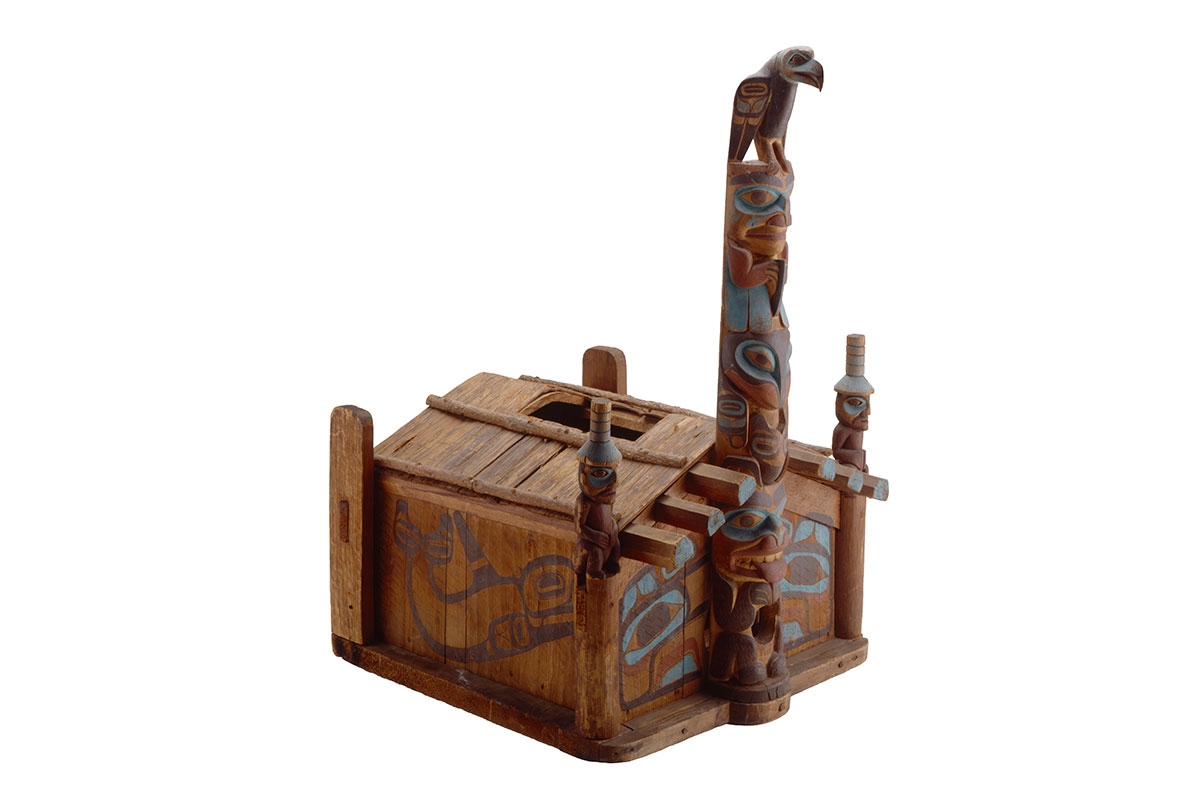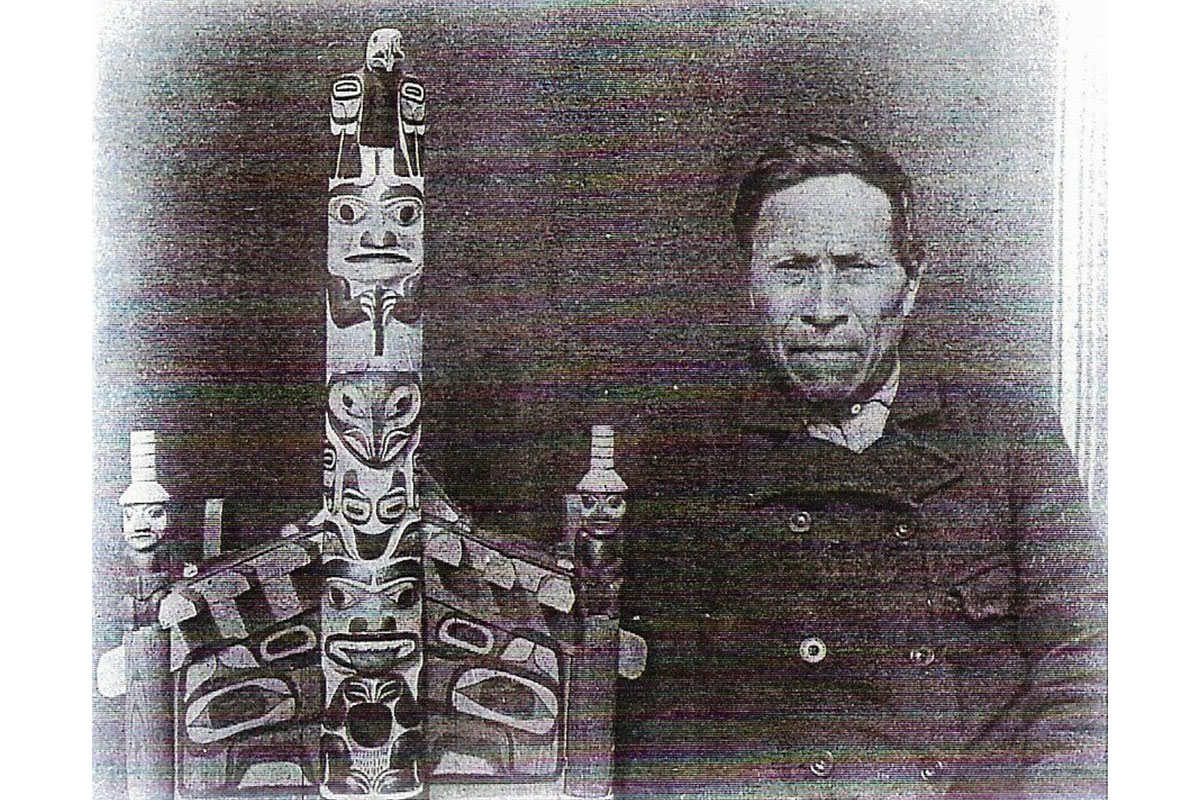Model House
Haida
Haida Gwaii, British Columbia
ca. 1895
wood, paint
height: (to top of central totem) 28"
width: 18"
length: 19"
Inventory # CN2060
Sold
This house model can be seen with its maker John gwaay t’iihld in a photograph provided to the British Museum by the Reverend Keen in 1893 - See: Robin Wright, Northern Haida Master Carvers, Seattle: University of Washington Press, 2001, fig. 5.73
PROVENANCE
John gwaay t’iihld (1813-1912), Haida Gwaii, BC
Apparently discovered in a home in Massachusetts
Cyr Auction Company, Gray, Maine, January 17, 2001, lot 1
David Wheatcroft, Westboro, MA
Donald Ellis Gallery, Dundas, ON
Private collection, New York, NY
RELATED EXAMPLES
For a closely related example also by the hand of John gwaay t’iihld – See: Jonathan King, First People, First Contacts, London: British Museum Press, 1999, pl. 156 (Bear House) and Robin Wright, Northern Haida Master Carvers, Seattle: University of Washington Press, 2001, fig. 5.71
Canadian Museum of Civilisation, Nos. VII-B-1166 for another example by gwaay t’iihld – See: Ibid, fig. 5.70, (Monster House at Massett)
Canadian Museum of Civilisation, No. VII-X-1280 – See: George MacDonald, Haida Art, Vancouver: Douglas & McIntyre, 1996, pl. 84 for an example by an anonymous Kaigani Haida artist
American Museum of Natural History, No. 16/8771 – See: Aldoina Jonaitis, From the Land of the Totem Poles, Seattle: University of Washington Press, 1988, pl. 88
John gwaay t’iihld was one of a group of highly skilled Haida carvers working in the last half of the 19th century, a period widely considered the “Golden Age” of Haida carving. Other known artists of the day included Charles Edenshaw, John Robson, Tom Price, and Simeon Stilthda. Although these artists never signed their works each had distinctive stylistic traits that make artistic attributions possible, if at times debated. It is highly unusual, as we see here, to see an artist actually photographed with their work. Model houses were primarily commissioned by field collectors for museums back East, most notably by James Dean for the Columbia World Exposition in Chicago in 1893. Of the known body of house models only three, including the present example, can be attributed to the master carver John gwaay t’iiild. Moreover, this example appears to be the only house model remaining in private hands.





